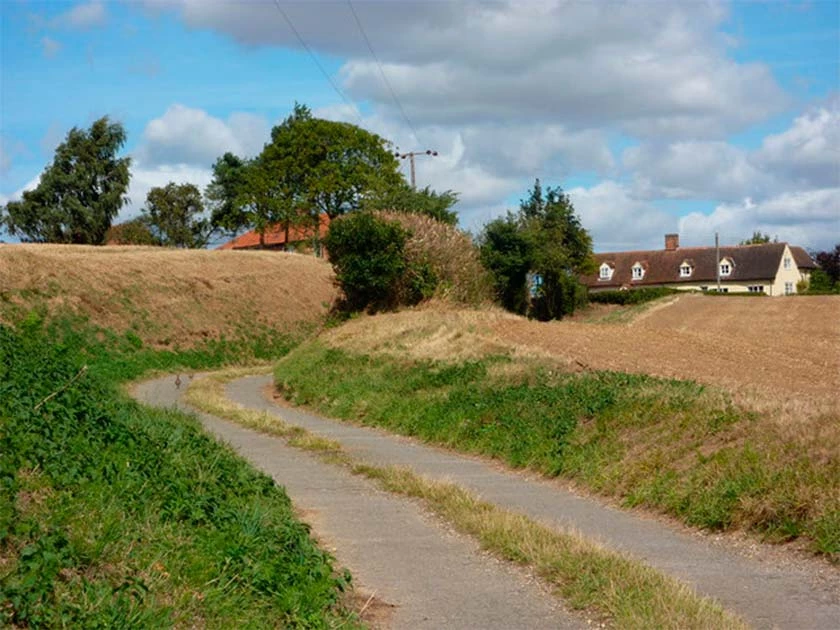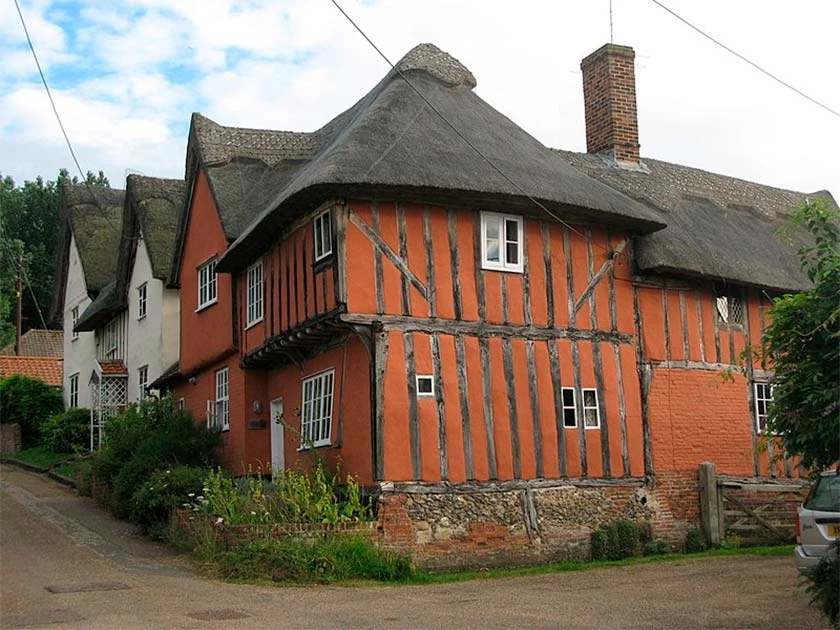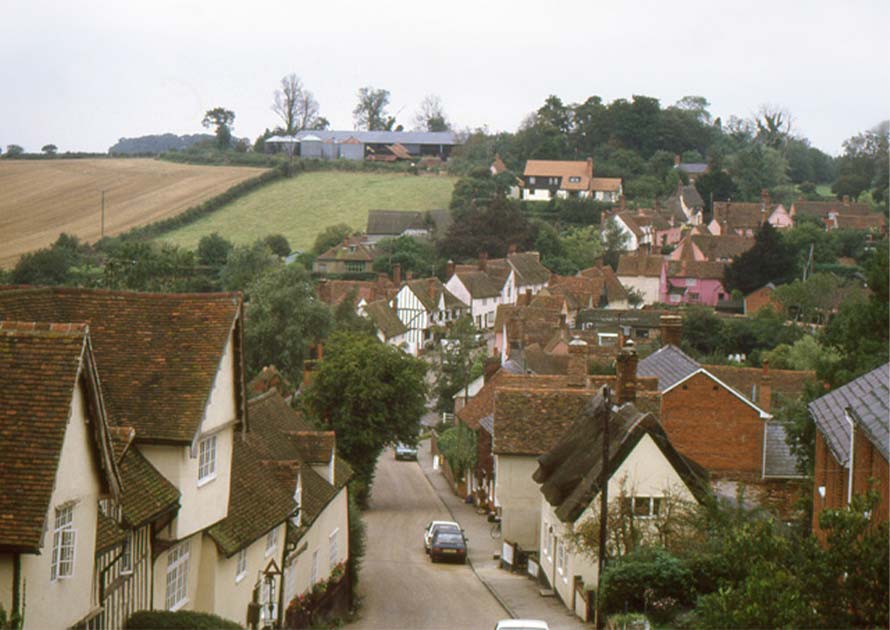The world is full of weird phenomena but one of the strangest, and rarest, is the timeslip. These are instances when people claim to have momentarily been transported to a different era or time period.
One of the most famous examples of this phenomenon is the Kersey Timeslip Incident, during which three teenage boys from the United Kingdom claimed to have seen the village of Kersey hundreds of years in the past. While nearly impossible to prove, experts have struggled to fully discount the witness’ versions of events.
So, what’s the truth? Did these boys really travel back in time, or is there a more reasonable explanation?
What Was the Kersey Timeslip Incident?
On the morning of October 1957, something so strange happened to a trio of 15-year-old boys that their lives were changed forever. William Laing, Ray Baker, and Michael Crowley were three Royal Navy Cadets traveling across the Suffolk countryside as part of an orienteering exercise.
Their task was to find a certain waypoint and then report back to their superiors, a seemingly simple enough task. As they were approaching their target, an idyllic village called Kersey, the boys became distracted by the sound of church bells and a plume of smoke rising above the hill they were climbing.

They had finally stumbled across the village of Kersey, but as they approached, they began to feel increasingly uneasy. The first thing they noticed was how one by one the sounds of nature that had surrounded them began to fall away. All that was left was the trickle of a nearby stream and the sound of the church bells.
As they entered the outskirts of the village, they saw that the autumnal trees were once again full of greenery, as if it was springtime. The cool breeze they’d been walking in was also gone and they could no longer see the smoking chimneys or the church spire that had drawn them to Kersey in the first place.
The streets of Kersey were deserted with no signs of life. This wouldn’t have seemed so strange, this was a Sunday morning in the rural heart of 50s England after all, but something else struck the three cadets as being odd.
- The Philadelphia Experiment – What’s the Real Story?
- The Vatican Chronovisor, Time Travel and a Photo of the Crucifixion
There were no cars to be found lining the streets, no telephone wires hanging from the buildings, and no TV aerials adorning the village roofs. Indeed, there was no sign of modern technology whatsoever. The buildings themselves looked ancient to the boys. They were timber-framed and had seemingly been built by hand, or as one boy put it, “almost medieval in appearance”.
It was then that the boys’ strange experience began to turn into something more sinister. Driven on by the inquisitiveness of youth, the boys approached the building nearest to them, which appeared to be a butcher’s shop.
One of the boys described it as, “There were no tables or counters, just two or three whole oxen carcasses which had been skinned and in places were quite green with age. There was a green-painted door and windows with smallish glass panes, one at the front and one at the side, rather dirty-looking. I remember that as we three looked through that window in disbelief at the green and moldy green carcasses… the general feeling certainly was one of disbelief and unreality…”
Chills running up their spines, the boys approached another house. Its windows were also greenish-tinted and smeared. Once again, they saw no signs of life within, the rooms were completely empty, crudely whitewashed, and “not of modern-day quality”.
As they stepped away from the house all three began to feel the icy stare of invisible watchers glaring down on them from all over the abandoned village. The boys had finally had enough and fled from the strange place. As they exited the village, climbing over a small hill, they turned back and could once again see smoking chimneys and hear the sound of church bells ringing. It was as if nothing had ever happened.
Years Later
In the 1980s two of the boys, Laing, and Crowley, reconnected over the phone and discussed the strange incident. While their recollections didn’t match perfectly, the two decided to contact Andrew Mackenzie, a leading member of the Society for Psychical Research.

After listening to the men, Mackenzie came to the conclusion that their trip to Kersey was a case of retrocognition, which is also known as a “time slip”. Simply put, he believes that what the three boys saw wasn’t the Kersey of the 1950s, but a Kersey from hundreds of years ago. It’s an incredibly rare phenomenon with only a handful of cases recorded worldwide.
In 1990 Laing met up with Mackenzie and the two men visited Kersey. With the aid of a local historian, they made some surprising connections to the boys’ experience and the real history of the village. For example, the strange butcher’s shop they had seen had been a butcher’s shop as early as 1790, and the building itself dated back to 1350.
Mackenzie used the supposed disappearance of the church to date the timeslip to before the 14th century when the village’s church, St Mary’s, was built. He also put the village’s eerie abandonment down to the black death of the same period.
All three boys had grown up far from Kersey and were completely unfamiliar with the village. This was the whole point of the orienteering exercise. The boys’ commanding officers should have been able to work out if the boys had made it to their destination or not through the boys’ descriptions of it.
When the boys told their superiors what they’d experienced, the men simply laughed it off before agreeing the three boys had indeed made it to Kersey. How could the officers be so nonchalant after hearing such a strange story?
Well, Kersey is an incredibly old village, boasting a large number of buildings that do indeed date back to the medieval period. The local pub, the Bell Inn, is over 600 years old and there are several thatched half-timbered buildings. It’s easy to see how the boys might not have been expecting to find such old buildings.

What about the lack of technology? Well, it turns out that the beauty of Kersey has always been fiercely protected by the Suffolk Preservation Society. When the village finally got mains electricity in the early 1950s it was decreed that overhead lines had to be hidden from view behind the houses and where that was not possible cables had to be hidden beneath the street.
A Mystery Unsolved
There are a couple of other problems with Mackenzie’s hypotheses that the boys really did experience a “timeslip,” besides the fact that Kersey is simply an old-looking village. Firstly, it’s very unlikely that a 13th or 14th-century village’s buildings would all have had glass windows. Glass was incredibly expensive back then. It also seems unlikely that people would spend money on glass windows, and then leave their homes completely unfurnished.
It’s also debatable as to whether Kersey would have had a butcher’s shop back then. During the period in question, only large towns tended to have butcher’s shops. A village like Kersey would have had a weekly market where the locals got their meat.
It’s most likely the boys experienced a real psychological condition known as derealization. This would explain why their recollections don’t match up (in fact the third witness, Roy Baker, remembers nothing odd at all). The boys were simply confused by what they found when entering Kersey, and their minds played tricks on them. These tricks have been accentuated by the passage of time and the process of mutual reinforcement once the men got back in touch and began discussing what had happened.
Or maybe, just maybe, the three boys really did experience a timeslip and travel back in time. Either way, it makes a good ghost story.
Top Image: Kersey in 1912. Did the cadets really slip through time, or was the Kersey Timeslip Incident simply them mistaking a well=kept and preserved village? Source: Internet Archive Book Images / Public Domain.